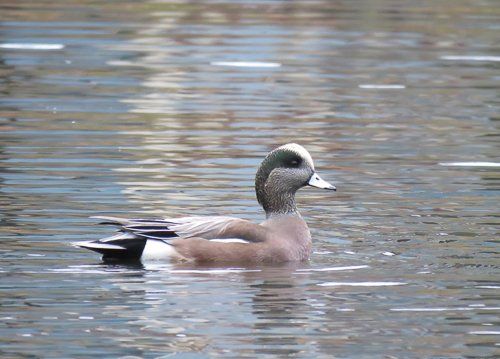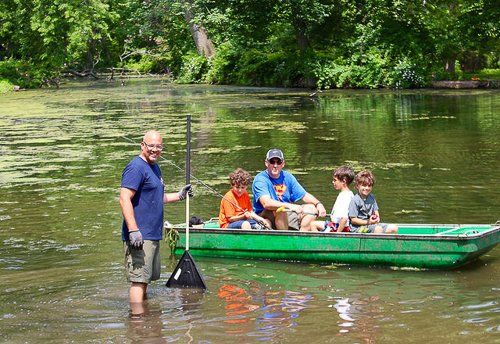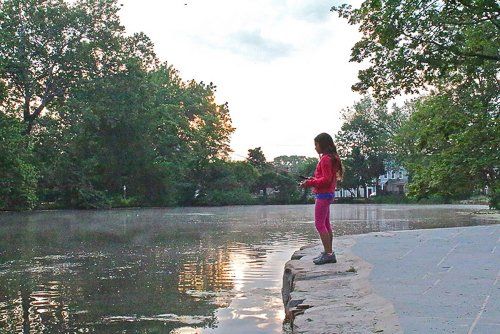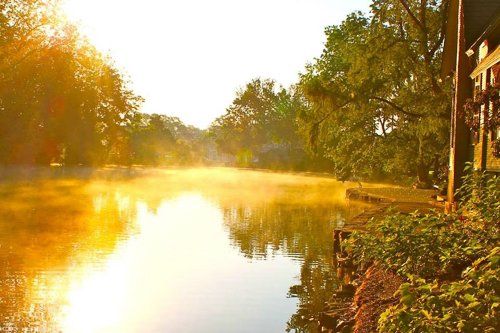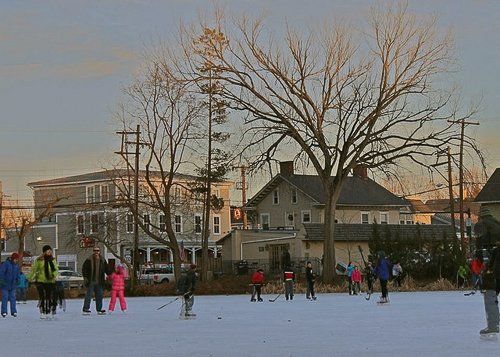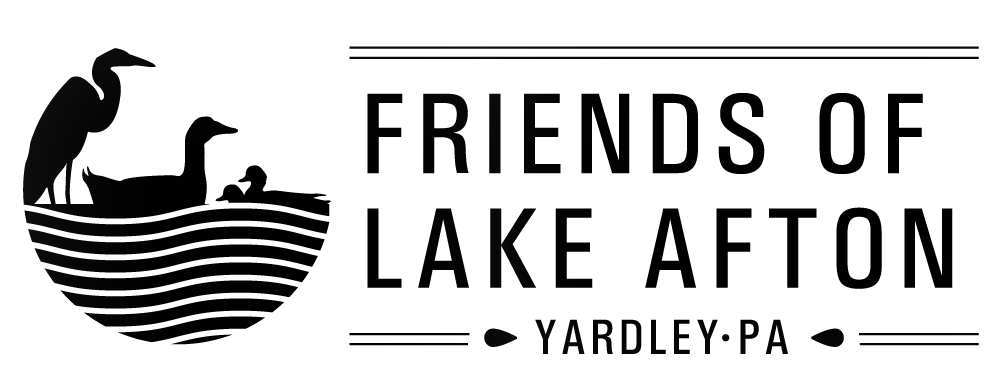About Friends of Lake Afton
The Friends of Lake Afton (FOLA) is a civic non-profit 501(c)(3) organization whose mission is to restore, improve, protect and maintain Lake Afton and the public areas surrounding the Lake for all to enjoy.
The First Friends of Lake Afton:
In 1969, more than fifty years ago, when Lake Afton was in disrepair, three women got together and formed FOLA in order to raise money to improve and maintain Lake Afton. The three founding women were: Phoebe Griswold, wife of Rev. Frank Griswold, minister of St. Andrew's Episcopal Church in Yardley; Linnea Cunningham, who owned a deli in Yardley; and Janet Hays Austin, local artist. FOLA was incorporated in 1975.
Lake Afton Today:
Every year, with the help of volunteers, we have a Clean-Up/Volunteer Day in the spring to improve the landscaping in time for the increased activity at the Lake in the warmer months. Between April and October, we hold three Boat Ride FUNdraisers that many people come back to year after year. At the end of summer, Lake Afton gets another spruce-up.
FOLA proactively performs maintenance of the Lake's infrastructure to ensure the Lake remains healthy. FOLA works with and values a positive relationship with Yardley Borough and LMT Environmental Advisory Committees. We follow the recommendations of the Coalition for the Delaware River Watershed.
Lake Afton’s History:
Lake Afton is a manmade Lake that was created to provide power via water wheel energy for a gristmill that John Brock built in 1705. Lake Afton was originally referred to as “the millpond,” not as Lake Afton. William Yardley purchased John Brock’s gristmill in 1732, demolishing and replacing the gristmill in 1769 with Yardley Grist Mill which was also powered by the millpond. It’s been said that Lake Afton was named after the poem “Afton Water,” which was written by Robert Burns in 1791.
Enjoying Lake Afton:
Although Lake Afton was created to run a Grist Mill via water wheel energy, it’s always been privately owned, and yet has always been generously shared with the public. Lake Afton, considered by many to be Yardley’s town jewel, is a favorite spot for many people throughout the year. Individuals, families or friends can ice skate in the winter, fish in the summer, feed the ducks and geese, watch/photograph wildlife, read, meet up with friends, enjoy a snack or beverage, paint a picture, sit on a park bench, and more. Lake Afton has been one of the most photographed places in Bucks County.
Why our Lake is in jeopardy:
Our picturesque Lake Afton is threatened by filamentous algae that has taken up residence in the Lake for the past few years in the warmer months. Without efforts to rid Lake Afton of this algae, it would eventually choke the oxygen out of the Lake, causing all that live in and depend on the Lake for its food and water supplies to become sick and die, which would eventually result in Lake Afton becoming a swamp.
In 2015 Lake Afton was evaluated and the water was tested. The results showed that the algae begins to grow because Lake Afton is shallow, no more than 3 feet deep, and has too little shade, a combination that causes the water to become too warm, creating the perfect environment for algae to start to form. The water that was tested showed that there is phosphorus in the water. Phosphorus enters Lake Afton from the dam (Lake Afton’s main water source where the water is diverted from Brock Creek) as well as from the storm drains that empty into Lake Afton. Once the algae starts to grow, the phosphorus in the Lake feeds the algae causing it to grow like wildfire.
Our goal for Lake Afton:
We continue to move forward with plans to reduce the phosphorus and other pollutants in the Lake to help reduce the algae.
We hired Clean-Flo, International, a company in West Chester, PA that helps bring bodies of water that are plagued with algae back to a healthy state again by using biological products that are not harmful to the animals and wildlife. After three years of treatments we saw a marked improvement. When using biological products, it takes a little longer than using chemicals but it is the safest way to go. After hiring Clean-Flo, we also raised enough money to replace our aging aerators that were no longer working properly.
The successful results of the algae treatments are dependent upon the aggressive application schedule of biological algae treatments. Nutrient sponges have also been placed in the Lake to help absorb phosphorus. Throughout the warmer months, we are in frequent contact with Clean-Flo about the Lake's appearance and the treatments are adjusted accordingly.
Project RELAY (Remediate the Erosion by Lake Afton in Yardley) was completed in Fall of 2019. Lake Afton had serious ground erosion due to water run off from St. Andrew's Church parking lot. The erosion was a major safety hazard. We raised the $12,000 to properly design and implement a runoff system, which diverted the water properly, preventing further erosion.
Over the past 10 years, Lake Afton has lost the majority of the trees that once provided shade to Lake Afton. The loss of shade is extremely detrimental to Lake Afton's wildlife. We are in the early stages of putting together Project Shade, which will have a much greater price tag than Project RELAY. We will reclaim part of Lake Afton, building up enough topsoil that will support large shade trees. Increased shade will help cool the water, thereby making it more difficult for algae to grow.
How Yardley and Lower Makefield residents can help:
Our small, non-profit organization thrives with the help of volunteers. More volunteers are needed, though. Please see what you can help us with:
- Social Media Updates
- Landscape and Property
- Fundraising/Community Relations
- Events - Boat Rides, FOLA's Pop-Up Gift Shop (All Things Yardley Gift Shop), Clean-up Days
Implement environmentally responsible lawn care. Fertilizers and pesticides are finding their way into Lake Afton via our creeks and stormwater runoff. These lawn products contain phosphorus and other chemicals that are polluting our waters, including Lake Afton. FOLA has information regarding alternatives to using weed killers and pesticides for homeowners to use. We’ll also have information about planting riparian buffers along the edge of properties that back up to the creeks and streams in the Delaware River Watershed. Water from Buck and Brock Creeks ends up in Lake Afton when the dam diverts water into Lake Afton. Riparian buffers are plants and bushes that are native to the area that essentially act as filters, preventing much of the lawn chemicals from ending up in our waterways.
For our latest updates, news and newsletters check out our Blog section of this website.

